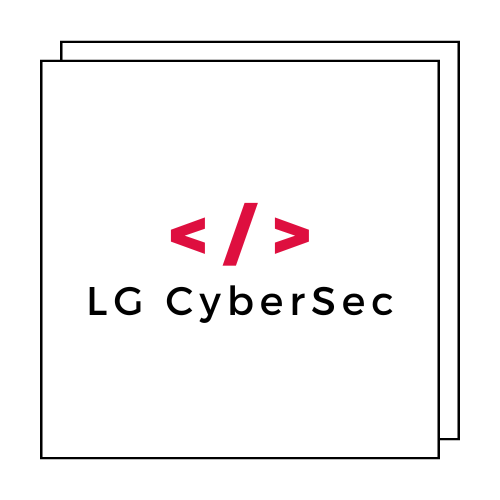When cyberattacks strike, digital systems fail, and networks go dark, having a hardcopy cybersecurity contingency plan could be the difference between a swift recovery and prolonged business disruption. The National Cyber Security Centre (NCSC) has increasingly emphasized this seemingly old-fashioned approach as a modern necessity, and for good reason.
With cyber threats evolving rapidly and 50% of UK businesses experiencing cybersecurity breaches in 2024, organizations cannot afford to rely solely on digital incident response plans that may become inaccessible during the very incidents they’re designed to address.
This comprehensive guide explores why the NCSC recommends maintaining physical copies of cybersecurity contingency plans and how your business can implement this critical safeguard effectively.
Understanding the NCSC’s Hardcopy Recommendation
The National Cyber Security Centre’s guidance on maintaining hardcopy cybersecurity contingency plans stems from real-world incident analysis and lessons learned from major cyberattacks. When ransomware encrypts systems or network outages occur, digital documents become unreachable precisely when they’re needed most.
The NCSC’s recommendation addresses a fundamental vulnerability in modern incident response: over-reliance on digital infrastructure during crisis situations. Professional cybersecurity consultants have long advocated for this approach, recognizing that effective incident response requires accessible, actionable guidance regardless of system status.
Key elements the NCSC expects in hardcopy contingency plans include:
- Critical contact information for internal teams and external partners
- Step-by-step incident response procedures
- Network diagrams and system recovery priorities
- Communication templates for stakeholders and customers
- Legal and regulatory compliance requirements
These physical documents serve as a reliable backup when digital systems are compromised, ensuring response teams can act swiftly and systematically during high-stress situations.
The Reality of Cyber Incidents: Why Digital Plans Fail
Recent cybersecurity incidents have highlighted critical flaws in purely digital contingency planning. During a ransomware attack, organizations often discover their incident response plans are stored on the same compromised networks they need to recover.
Consider the challenges faced during a typical cyber incident:
System Inaccessibility: Malware, ransomware, or network failures can render digital documents completely inaccessible. Teams scrambling to respond find themselves unable to access the very plans designed to guide their recovery efforts.
Time-Critical Decision Making: Every minute of downtime costs businesses money and reputation. IBM’s 2024 Cost of a Data Breach Report shows that the average time to identify and contain a breach is 277 days, with faster response significantly reducing costs.
Communication Breakdown: Email systems, internal messaging platforms, and digital contact databases may be unavailable, leaving teams unable to coordinate effectively or communicate with stakeholders.
Stress-Induced Errors: High-pressure situations increase the likelihood of mistakes. Clear, accessible hardcopy procedures help maintain systematic approaches even under extreme stress.
The NCSC’s practical guidance recognizes these realities, advocating for redundant, physical backup plans that remain functional regardless of digital infrastructure status.
Essential Components of Effective Hardcopy Contingency Plans
Creating comprehensive hardcopy cybersecurity contingency plans requires careful consideration of what information will be most critical during an actual incident. These plans should be detailed enough to guide response efforts but concise enough to use effectively under pressure.
Critical Contact Information
Your hardcopy plan must include up-to-date contact details for:
- Internal incident response team members with mobile numbers
- Senior management and decision-makers
- External cybersecurity experts and consultants
- Legal counsel and regulatory contacts
- Key suppliers and service providers
- Law enforcement and relevant authorities
Systematic Response Procedures
Document step-by-step procedures for common incident types, including:
- Initial assessment and containment actions
- Evidence preservation requirements
- Communication protocols and timing
- System isolation and recovery priorities
- Customer and stakeholder notification procedures
Technical Recovery Information
Include essential technical details such as:
- Network topology and critical system locations
- Backup system access procedures and credentials
- Recovery priority matrices
- Alternative communication methods
- Emergency supplier and vendor contacts
Professional cybersecurity services can help ensure your hardcopy plans include all necessary technical components while remaining practical for non-technical stakeholders to use.
Implementation Strategies for SMBs and Consumers
Small and medium-sized businesses face unique challenges in implementing hardcopy contingency plans. Limited resources and personnel require streamlined approaches that maximize effectiveness without overwhelming available capabilities.
Scalable Planning for SMBs
SMBs should focus on core essentials rather than attempting to replicate enterprise-level complexity:
Start with Critical Systems: Identify the 3-5 most critical business systems and prioritize recovery procedures for these areas. This focused approach ensures resources are concentrated where they’ll have the greatest impact.
Leverage External Expertise: Many SMBs lack dedicated cybersecurity staff. Establishing relationships with external consultants and including their contact information in hardcopy plans ensures expert guidance is available when needed.
Regular Testing and Updates: Schedule quarterly reviews of hardcopy plans to ensure contact information remains current and procedures reflect any business or technology changes.
Consumer-Level Implementation
Individual consumers and home offices can benefit from simplified hardcopy contingency planning:
- Document critical account information and recovery contacts
- Maintain physical copies of important passwords and authentication codes
- Create simple recovery procedures for major services and accounts
- Include contact information for banks, service providers, and tech support
The Australian Cyber Security Centre’s small business guide provides excellent examples of proportionate security measures suitable for smaller organizations.
Storage and Maintenance Best Practices
Even the most comprehensive hardcopy contingency plan becomes useless if it’s inaccessible during an incident or contains outdated information. Proper storage and maintenance protocols ensure your physical plans remain reliable and current.
Secure Storage Solutions
Multiple Locations: Store copies in at least three separate locations: on-site for immediate access, off-site for disaster scenarios, and with key personnel who can access them remotely.
Physical Security: Protect hardcopy plans with appropriate physical security measures. Consider fire-resistant safes for critical documents and ensure storage locations are known to relevant team members.
Access Control: Limit access to sensitive hardcopy plans while ensuring authorized personnel can reach them quickly during incidents. Clear labeling and organized storage systems reduce response time.
Maintenance Protocols
Establish regular maintenance schedules to keep hardcopy plans current:
- Monthly contact information reviews
- Quarterly procedure updates based on system changes
- Annual comprehensive plan reviews
- Post-incident updates incorporating lessons learned
Documentation of update procedures ensures consistency and helps identify when plans need revision. Expert cybersecurity consultation can help establish maintenance protocols that balance thoroughness with practicality.
Integration with Digital Incident Response
Hardcopy contingency plans work best when integrated seamlessly with digital incident response procedures. Rather than replacing electronic systems, physical plans should complement and support digital processes.
Hybrid Approach Benefits: Combining digital and physical planning creates redundancy that enhances overall incident response capability. Teams can use digital tools when available while falling back to hardcopy guidance when systems fail.
Training Integration: Incident response training should include both digital and physical plan components. Team members need familiarity with hardcopy procedures to use them effectively under pressure.
Communication Coordination: Establish clear protocols for when teams should transition from digital to hardcopy procedures. This decision-making framework prevents confusion during actual incidents.
The NIST Cybersecurity Framework emphasizes the importance of comprehensive preparation that includes multiple response modalities, supporting the NCSC’s hardcopy recommendation.
Measuring Success and Continuous Improvement
Effective hardcopy contingency planning requires ongoing assessment and improvement. Regular testing, feedback collection, and plan refinement ensure your physical backup remains a valuable asset rather than an outdated burden.
Key performance indicators for hardcopy contingency plans include:
- Response time improvement during tabletop exercises
- Accuracy of contact information during quarterly checks
- Team confidence levels with hardcopy procedures
- Integration effectiveness with digital systems
Regular tabletop exercises should specifically test scenarios where digital systems are unavailable, forcing teams to rely on hardcopy guidance. These exercises reveal gaps and improvement opportunities that might not be apparent during normal operations.
Post-incident reviews should always evaluate hardcopy plan effectiveness, identifying what worked well and what needs improvement. This feedback loop ensures continuous enhancement of your physical contingency capabilities.
The NCSC’s recommendation for hardcopy cybersecurity contingency plans reflects the hard-learned reality that comprehensive incident response requires redundancy and reliability. In an increasingly digital world, sometimes the most advanced strategy is having a reliable backup that doesn’t depend on the very systems you’re trying to protect.
For SMBs and consumers, implementing hardcopy contingency planning doesn’t require massive resources or complex procedures. Focus on essential information, maintain currency through regular updates, and integrate physical plans with existing digital processes.
Don’t wait for a cyber incident to discover the value of accessible, reliable contingency planning. Start developing your hardcopy cybersecurity contingency plans today, and ensure your business can respond effectively regardless of what digital systems remain operational.
Ready to strengthen your cybersecurity posture with comprehensive contingency planning? Contact the experts who understand the critical importance of both digital innovation and time-tested backup strategies in protecting your business.

